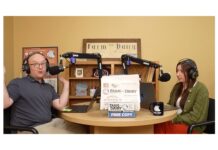UNIVERSITY PARK, Pa. — Taxpayers once had very few options for how to receive refunds from the U.S. Internal Revenue Service — they either got a check in the mail or a direct deposit to a bank account.
But family-finance experts at Penn State’s College of Agricultural Sciences said savvy management of refunds and adjustments to withholding rates offer tax filers painless ways to save for emergencies and future financial goals.
Several source
sTax refunds can result from several factors, including overwithholding of payroll taxes and various tax credits based on household configuration and income, number of children, education expenses and costs for energy-efficiency improvements, among others.
Taxpayers can split their refunds among two or three checking or savings accounts with U.S. financial institutions, regardless of which form they file or whether they file electronic or paper returns. Now you can opt to purchase Series I U.S. Savings Bonds, said Robin Kuleck, a Penn State Extension family financial-management educator based in Elk County.
“Tax-filers have been able to split their refund for the past several years, but this is the first time refunds can be used to purchase savings bonds,” Kuleck said.
“Bonds are sold in $50 increments, and leftover refund balances can be paid to another account or mailed to you in a check. Younger taxpayers may not be familiar with savings bonds, so this may be their first opportunity to learn about and purchase them.”
While banking your refund can be a good way to force yourself to save money, taxpayers may be better off bringing home an additional amount in their regular paychecks throughout the year and depositing it in an account that would earn interest, according to Cathy Bowen professor of agricultural and extension education.
“The federal income tax is a pay-as-you-earn program,” said Bowen. “In short, a portion of each paycheck is deducted to pay your projected yearly tax bill. Federal taxes withheld from your paychecks are based on the money earned and the number of allowances claimed on the Form W- 4 you filed with your employer.
“When you file your income tax return, you are, in essence, reconciling your tax bill with the federal government,” she explained.
“When you overwithhold, you bring home less money each pay period, and the government gets free use of your money since it doesn’t pay you interest on the excess amount withheld.”
Too much?
Bowen said there is a quick way to determine if you are having too much in taxes withheld.
“On your most recent income tax return, compare the amount of the taxes you owed (Line 44 on the 2010 Form 1040) and the amount withheld for federal taxes (Line 61),” she said.
“If the difference between these figures is several hundred dollars and you have no nonrefundable credits (Lines 47 to 53), adjusting the withholdings on your Form W-4 will let you bring home more of your earnings rather than wait to get your own money back.
“For example, if you are paid monthly and the difference between your tax bill and the federal taxes withheld is $600, you could have an extra $50 per month. If you saved that $50 in an interest-earning account, you could have even more money.”
Can adjust
Bowen said taxpayers can complete a new Form W-4 by visiting the personnel office of their employer. She noted that the withholding calculator on www.irs.gov and IRS Publication 919 will walk you through the process.
If a refund results from nonrefundable and refundable credits, then adjusting your W-4 allowances may not be necessary. Some filers argue that getting a large refund is the only way they can save or buy costly items.
Learn to save. “If you have the discipline to get out of bed each day to work and earn a paycheck, you can develop the discipline to save a portion of your earnings for later use,” Bowen said.
“Direct deposit into a savings account is one way to save a set amount each pay period. Once your paycheck reaches your checking account, automatic debits can send those extra dollars into your interest-earning savings account.”
If you’re still not convinced, Bowen said, change the scenario from paying taxes to buying groceries.
“Would you prepay your local grocer $500 for food each month and actually buy $400 of groceries during the month, then think you are getting a great deal when the grocer returns your unused $1,200 ($100 x 12 months) five to six months later?” she asked.
Break even
“That sounds crazy, and so does overpaying your tax bill to get a large refund. The goal at income tax time is to break even or get as close to breaking even as possible without owing money for taxes or without getting a huge refund due to overwithholding.”
Kuleck said if you are due a refund, the quickest and safest way to receive it is to file your return electronically and provide your bank account and routing numbers for direct deposit, resulting in most refunds arriving within 10 days.
“With so quick a turnaround, most filers shouldn’t need to use expensive refund-anticipation loans from a paid preparer the day they have their taxes prepared,” she said.
“And if you don’t prepare your own tax return, ask your paid preparer to explain the entry on each line.
“After all, you will sign it, indicating that you agree that it contains the truth about your household’s financial activities. Once you have a clearer understanding of how tax law applies to your situation, you can make better financial decisions.”









